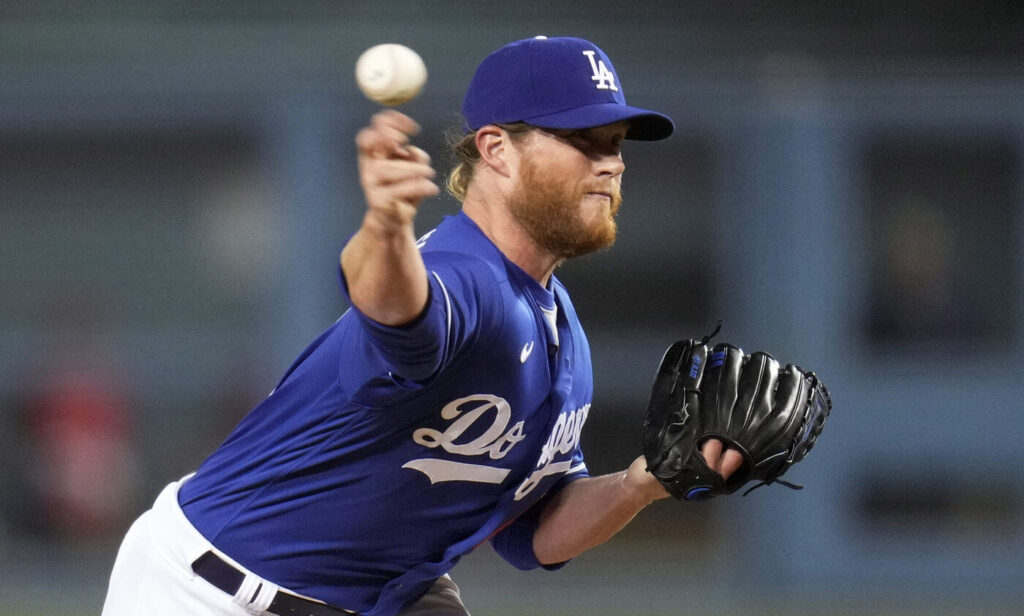
ROTATION
Looking at this group is proof that you can’t have everything – even with a $290 million payroll. While the Dodgers made moves in the past month to strengthen their bullpen and beef up their lineup, the only moves they made to shore up the starting rotation were low-cost signings of Andrew Heaney and Tyler Anderson. Imagine if Clayton Kershaw had not come back healthy – or not come back at all? The front of the rotation is strong with Walker Buehler and Julio Urias. Kershaw has shown no residual signs of last year’s frightening elbow problems. But the dropoff from there is precipitous. Heaney and Tony Gonsolin will start the season as the back of the rotation with Anderson (and David Price) pitching in a secondary role, soaking up multiple innings following short starts. The future is bright with Bobby Miller, Ryan Pepiot and Landon Knack on the way and Dustin May recovering from Tommy John surgery. But the starting rotation is the soft spot on this star-studded roster.
BULLPEN
The Dodgers parted ways with the franchise’s all-time saves leader, allowing Kenley Jansen to leave for Atlanta via free agency … then went out and acquired the only active pitcher with more saves than Jansen. After selling the idea of a collective at closer all spring, the Dodgers will instead hand the ninth inning over to Craig Kimbrel who was as close to unhittable as any closer for eight seasons – his WHIP was 0.91 with 14.6 strikeouts per nine innings from 2011 through 2018. It has been more of a rollercoaster ride the past three seasons, but the Dodgers will pave the way for Kimbrel with a deep bullpen capable of shortening games. Manager Dave Roberts will be able to play matchups and roll out Blake Treinen, Brusdar Graterol and Daniel Hudson to protect leads. Tommy Kahnle, Caleb Ferguson, Danny Duffy and even Dustin May could add more weapons to the bullpen mix as the season goes on. With the compressed spring training likely to shorten starts in the first month (or more) of the season, a deep bullpen could be even more valuable this season.
INFIELD
The Dodgers have a former MVP at first base (Freddie Freeman), the reigning National League batting champ back in his comfort zone at shortstop (Trea Turner) and All-Stars at third (Justin Turner) and second (Chris Taylor or Max Muncy). Only the Braves (Austin Riley, Dansby Swanson, Ozzie Albies and now Matt Olson) can make a case for a better infield. The addition of Freeman restores some left-right balance to the Dodgers’ lineup and adds one of the most consistent run producers in the National League to the top of the order. Gavin Lux looked like the odd man out until AJ Pollock was traded. Now there could be at-bats for him in left field or at second base (when Taylor plays the outfield). The biggest question mark in this group is Muncy’s health. From all indications this spring, he has recovered from last year’s late-season elbow injury.
OUTFIELD
The Dodgers will once again have former MVPs playing side-by-side in the outfield – but neither Mookie Betts nor Cody Bellinger has looked like their MVP iterations recently. Betts struggled with injuries last season and played just 122 games (his lowest total for a full season in his career), batting .264 (tied for a career low) with an .854 OPS (his lowest since 2017). Betts proclaimed himself healthy this spring but the Dodgers were slow to take the bubble wrap off him in during Cactus League play. Bellinger, meanwhile, was the story of the spring – and not in a good way. His miserable 2021 was blamed on a series of physical challenges (primarily shoulder surgery in November 2020). But Bellinger looked lost at the plate this spring and each meaningless spring strikeout seemed to add greater weight to the concerns about Bellinger. He has much to prove in 2022. Taylor and Lux figure to take down most of the playing time in left field. But Pollock’s bat (a .297 average and 21 home runs last year) will be missed.
CATCHER
Dave Roberts proclaimed the 27-year-old Will Smith one of the top three catchers in baseball last October. It might not be as hyperbolic as it sounds. Smith’s defense still has some rough edges, but his offensive production – an .892 career OPS and 25 home runs last season, his first full one in the majors – is uncommon for the position these days and he has already established himself as one of the best clutch hitters on the team. Austin Barnes provides a capable backup.
BENCH
A year ago, Andrew Friedman made a mistake – and it came back to haunt him in October. The Dodgers lost Kiké Hernandez and Joc Pederson to free agency, stripping away some of their depth. Friedman miscalculated, failing to acquire veterans to flesh out the roster as role players. A series of inexperienced or inadequate replacements paraded across the Dodgers’ bench last season – Sheldon Neuse, Luke Raley, Zach McKinstry, Zach Reks, DJ Peters, Billy McKinney. Albert Pujols had to be signed off the scrap heap. In the end, it was Steven Souza Jr. who took one of the most important at-bats of the year – and struck out against Tyler Matzek in Game 6 of the NLCS. Friedman appears to have learned from the experience and collected some veteran role players (Hanser Alberto, Kevin Pillar, Jake Lamb) to compete for bench spots alongside Lux, Barnes and Edwin Rios this year.
Related Articles
2022 Dodgers regular-season schedule
Dodgers prospect Bobby Miller impresses in Freeway Series finale
Dodgers’ Dustin May making progress toward return
Trout-less Angels flex their lineup depth against Dodgers
Dave Roberts still mulling Dodgers’ rotation order
MANAGER
Roberts has absorbed more criticism than any manager with a .622 winning percentage, three pennants in his first five seasons and a World Series title – mainly because very few managers in baseball history can match that record. If the 2020 championship quieted the torches-and-pitchforks mob, it was only temporary. The Dodgers’ pitcher usage last October (dictated from on high as much as chosen by Roberts) only brought them back with more vigor. The Dodgers do things their way and are unapologetically arrogant about their belief in those decisions and the processes behind them. Roberts is the public face of that and takes the abuse when the super-sized expectations aren’t met.
